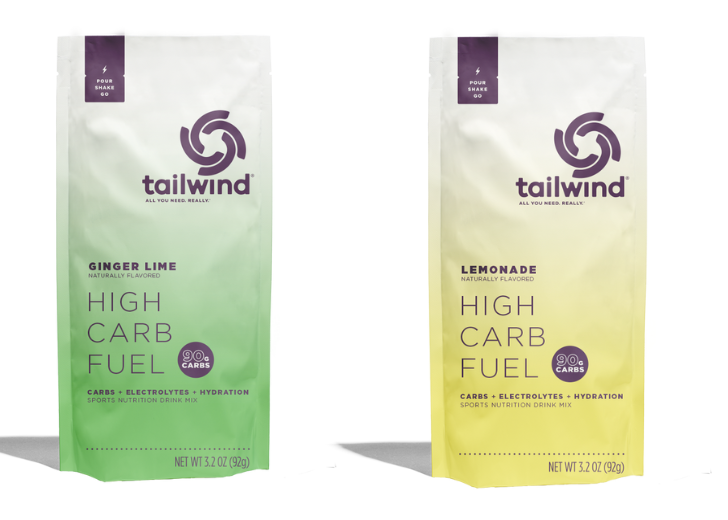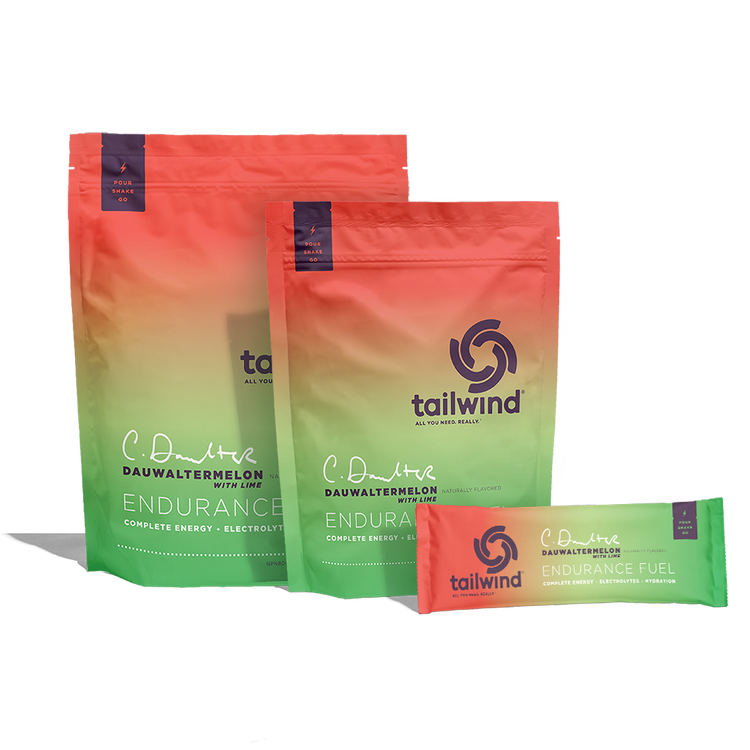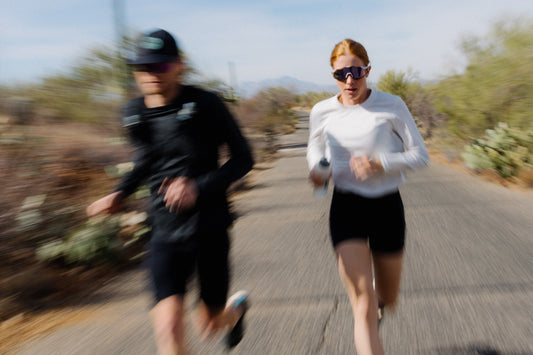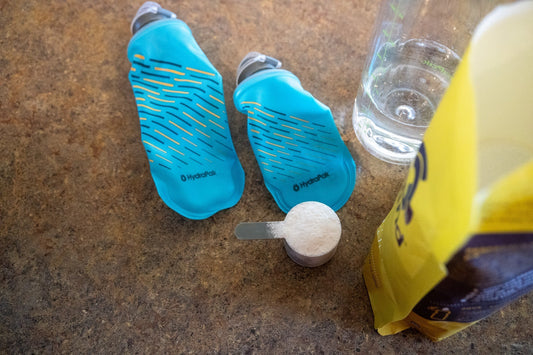Osmolarity and Fuel for Endurance Sports
1 Comments
By Art Zemach, M.D
Ultra-runners, cyclists, and other endurance athletes have 3 complex issues to manage during long athletic events: hydration, electrolytes, and fueling. Tailwind Endurance Fuel takes care of all three issues for you, so you can sip it throughout your event and know that your body will be hydrated, tuned, and fueled.
You may also have heard about the issue of osmolarity of endurance fuels. Tailwind takes care of that for you as well, so you don’t have to worry about it. Mix 2 to 3 scoops of Tailwind in 24 ounces of water, and drink 16 to 24 ounces per hour during your long run or ride. Our goal is to help you be your best, by simplifying your nutrition.
However, if you would like to learn more science, and specifically about osmolarity and how it relates to endurance fuels, then the rest of this blog post is for you.
Osmolarity and Your Blood
Osmolarity is a measure of how concentrated a solution is. The blood in your veins has an osmolarity of 280 to 290 mOsm, and your body works hard to keep it that way.
Most of your blood’s osmolarity comes from sodium (about 91%), a small amount comes from blood glucose or blood sugar (about 2%), and the rest comes from other electrolytes and proteins.
For your blood, the most important determinant of osmolarity is sodium. Sodium is the body’s hydration ion, because in your body, water follows sodium. Matching the amount of sodium you take in to the amount of water you drink keeps you well hydrated.
Your blood’s osmolarity depends very little on carbohydrates. While sodium travels in your veins with water, carbohydrates travel to your muscles and other tissues to be burned as fuel or stored as energy.
Osmolarity and the Digestive System
It’s tempting to think that the osmolarity of what you eat and drink must match the osmolarity of your blood, but this is not the case. For example, you can drink water, which has an osmolarity of almost zero, or you could eat a large lunch and wash it down with a Coke, a meal with a very high osmolarity. In either case, your body digests and absorbs the meal easily.
How does the body handle food and drink over a wide range of osmolarities? With large fluid shifts. Every day about 10 liters of fluid enters and leaves the digestive system. About 2 liters comes from eating and drinking, and about 8 liters comes from the salivary glands, stomach, liver, pancreas, and small intestine. So the amount of fluid we drink is much smaller than the amount of fluid the body puts into the digestive system. These large fluid shifts adjust the osmolarity of what you eat and drink. This is business as usual for your digestive system, which is well prepared for drinks and foods of different osmolarities.
Osmolarity and Exercise
Everything that the digestive system does becomes more difficult during exercise. It doesn’t shut down entirely, but exercise slows your digestion because your body diverts blood flow to your muscles when you’re working hard.
Therefore, the best endurance fuels are going to be the ones that ask your digestive system to do the least amount of work. The right amount of sodium is as must. For carbohydrates, there is a choice: Simple carbohydrates that are quickly absorbed but have a high osmolarity, or complex carbohydrates that are slowly absorbed but have a low osmolarity. It turns out that for exercise, simple carbohydrates are better.
Simple Versus Complex Carbohydrates for Exercise
Let’s say that you and your friend Liesl are running an ultramarathon. You each have energy drinks with 250 calories of simple sugars in a 24 oz (710 ml) bottle, and you’re planning to drink one per hour.
Usually you are evenly matched, but Liesl is going to try to get an advantage by decreasing the osmolarity of her sport drink. She wouldn’t, if she had read this blog, but she’s going to anyway! Liesl calculates, correctly, that 250 calories of glucose will add 347 mOsm to the osmolarity of her energy drink, and she’s worried about it. She has forgotten that simple sugars have their own transporters, as well as cotransporters that both help and work with the absorption of sodium and water. Her plan is to keep the number of calories the same, but to decrease the osmolarity by getting rid of the simple sugars and using 250 calories of a more complex carbohydrate, maltodextrin. But there are problems she is not anticipating.
The first problem is that her digestive system has no transporter for maltodextrin. It has several types of transporters for glucose, but none for maltodextrin. Complex carbohydrates like maltodextrins have to be broken down into glucose before they can be absorbed. Her maltodextrin endurance fuel will have a lower osmolarity in her water bottle, and a lower osmolarity as she is drinking it, but before it can be used by her body it has to be broken back down into individual glucose molecules, and the osmolarity goes back up.
The second problem is that breaking maltodextrin down into glucose takes time, time during which her calories are not being absorbed. While you are running fast and absorbing calories with several kinds of glucose transporters, Liesl is absorbing nothing because she’s still breaking down maltodextrin chains.
The third problem is that if the absorption of maltodextrin is too slow, maltodextrin fragments will make it all the way to her colon, where the normal bacteria in her gut will eat them and make gas. If you’ve ever had a lot of gas during or after an event, after drinking an endurance fuel with a complex carbohydrate like maltodextrin, this is what’s happening.
So while Liesl is having digestive problems, you’re having the race of your life in picturesque mountains, and the day is yours.
The take-home message is that simple sugars avoid the above problems and increase the absorption of sodium and water through the use of transporters and co-transporters, making them ideal exercise fuels.
But remember that it’s only during and right after exercise when simple sugars are the preferred fuel. When not exercising, you should avoid sugars and take your carbohydrates as fresh fruits and vegetables. I like a salmon and kale salad with cashew nuts and blueberries.
The Osmolarity of Tailwind
Tailwind Endurance Fuel mixed as recommended at 2 to 3 scoops per 24 oz (710 ml) of water has an osmolality of about 480 to 720 mOsm. While this is more than twice the osmolarity of blood, what is more relevant for a digestive system stressed by exercise is that Tailwind has the right amount of sodium, the simple sugars that contribute to the osmolarity are themselves very well absorbed, and the ingredients augment one another’s absorption using cotransporters. That is why Tailwind is a such a fabulous racing fuel. Tailwind is usually the solution to an athlete’s digestive distress problems. Athletes can do entire 100- mile ultra runs on nothing but Tailwind, and some of them get on the podium!
See you on the trails!







1 comment
Interesting. Though I’m liking Tailwind, especially the light flavor and nothing artificial, I’ve used a maltodextrin drink for years as a cyclist without any of the issues mentioned here.